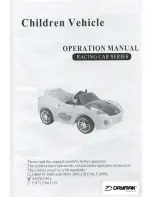
CSP-HE/HS-1
Emergency and
Malfunction Procedures
ROTORCRAFT FLIGHT MANUAL
MD 500
(Models 369HE/HS/HM
)
Revision 6
3-3
FAA Approved
3-3. ENGINE FAILURE
COMPLETE POWER LOSS
Indications:
Flashing red
warning indicator ON with engine out audible
warning tone
in headset.
Left yaw (due to a reduction in torque)
Drop in engine speed.
Drop in rotor speed.
Change in noise level.
NOTE
:
The amount of yaw is dependent upon the amount of torque at the moment of
power loss. High torque will cause a large yaw while low torque will cause a
relatively small yaw.
Respond immediately to the ENGINE OUT/low rotor RPM warning
by adjusting collective to maintain rotor RPM within limits, then
check engine instruments and other indications to confirm engine
trouble.
Conditions:
The failure indicators are actuated when N
1
falls below 55%.
Procedures:
Engine Failure − In Cruise at 420 Feet AGL or Above
F
Allison C−18 engine
: Adjust collective pitch according to altitude and
airspeed to maintain rotor speed between 400 and 514 RPM.
F
Allison C−20 engine
Adjust collective pitch according to altitude and air−
speed to maintain rotor speed between 400 and 523 RPM.
F
Apply pedal pressure as necessary to control aircraft yaw.
F
Adjust cyclic control as necessary to control airspeed and flight path.
NOTE
:
The minimum rate of descent with power off will be attained at an airspeed of 60
KIAS and 400 rotor RPM.
The maximum glide distance with power off will be attained at an airspeed of 80
KIAS and 400 rotor RPM.
Glide distances attained during an actual engine out autorotation may be less
than the glide distances achieved during practice autorotations when operating
at reduced RPM (N
2
/N
R
needles joined).
F
After confirming complete loss of power, time and altitude permitting,
place twistgrip in cutoff and close fuel shutoff valve.
ENGINE
OUT
WARNING
















































